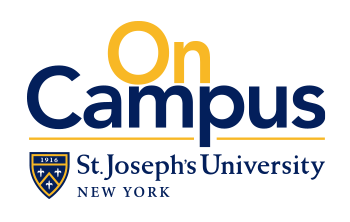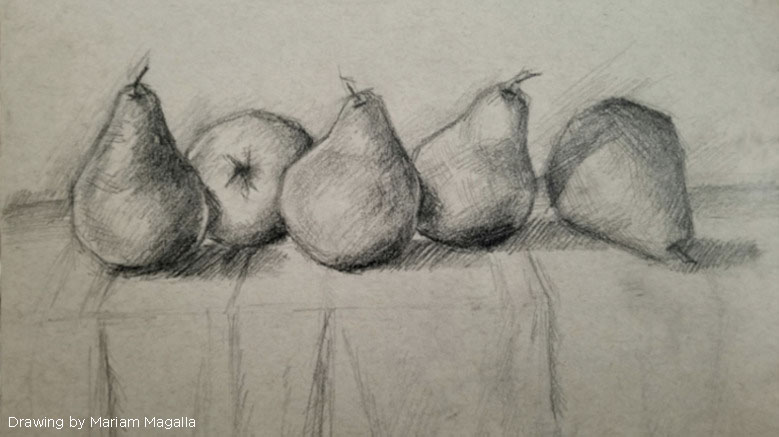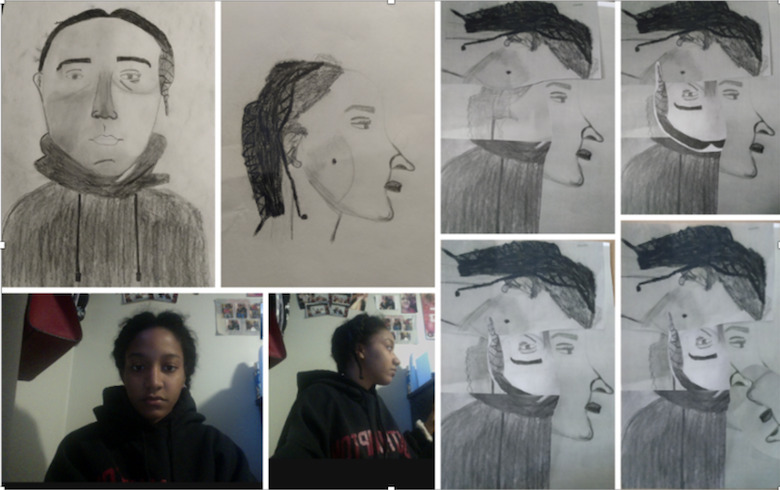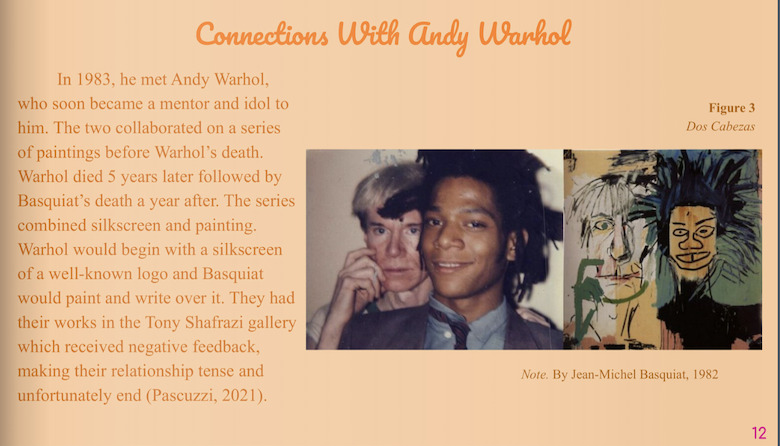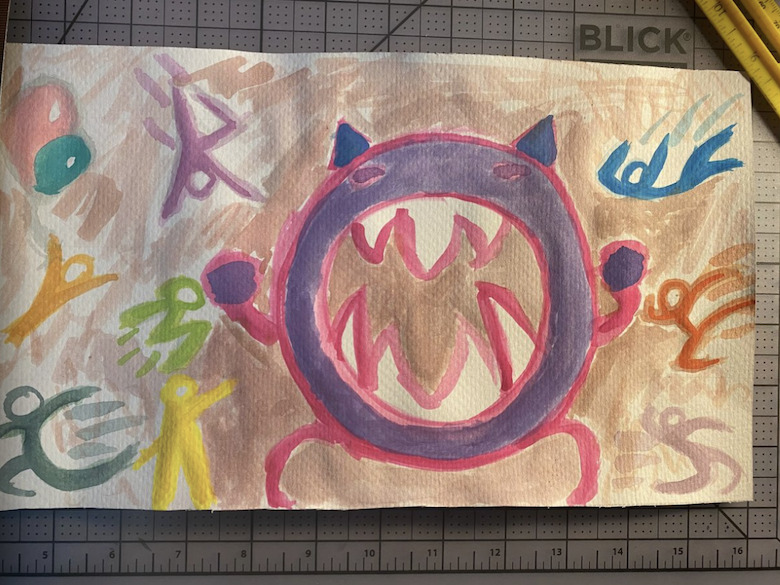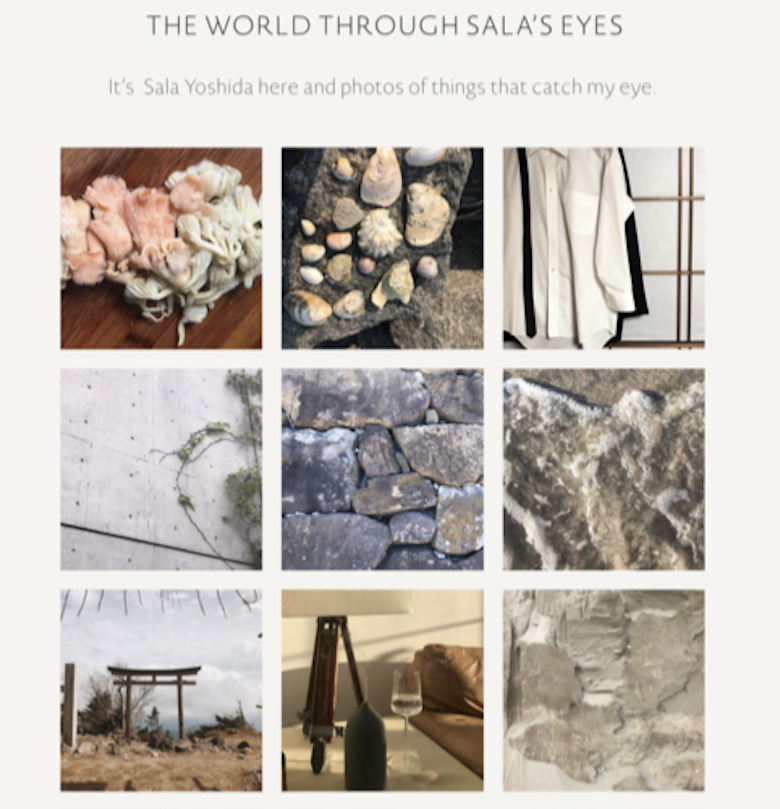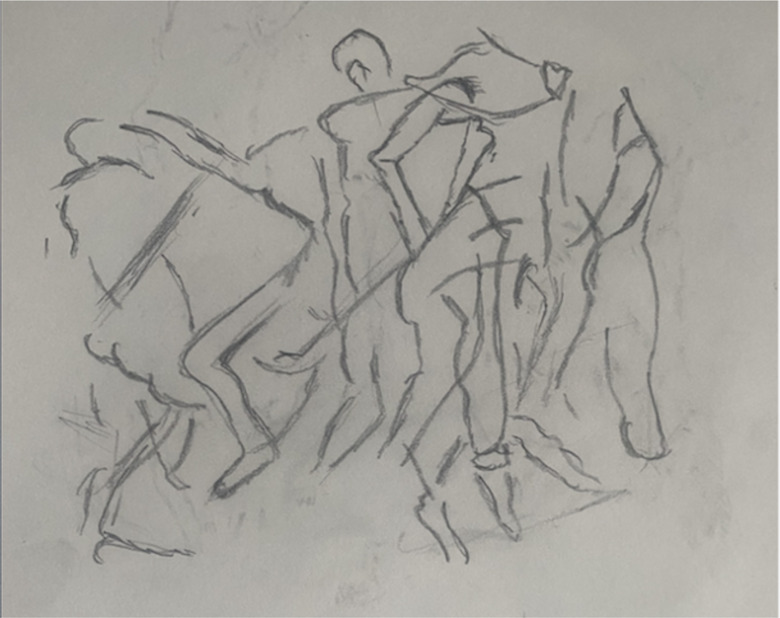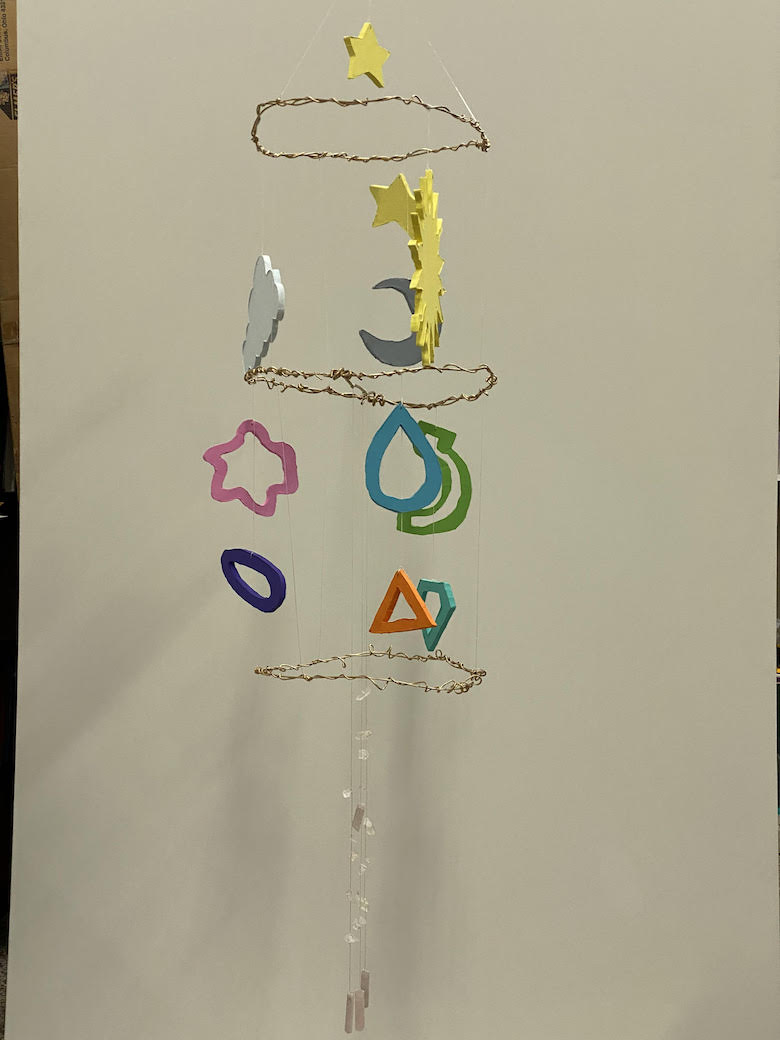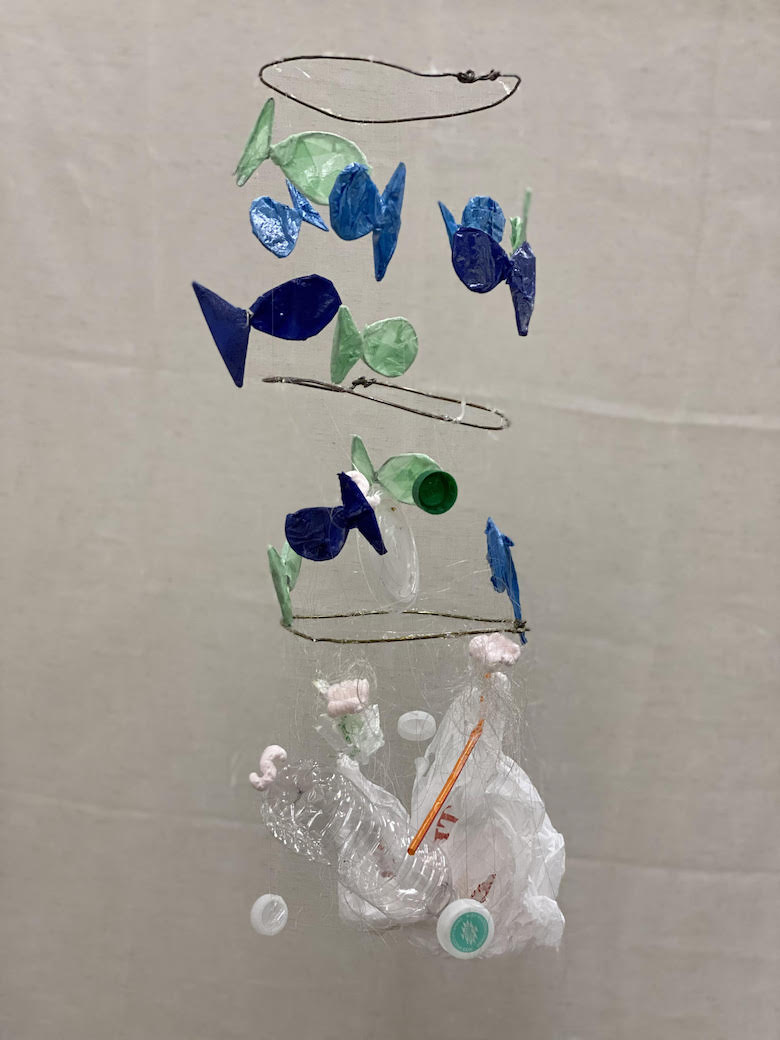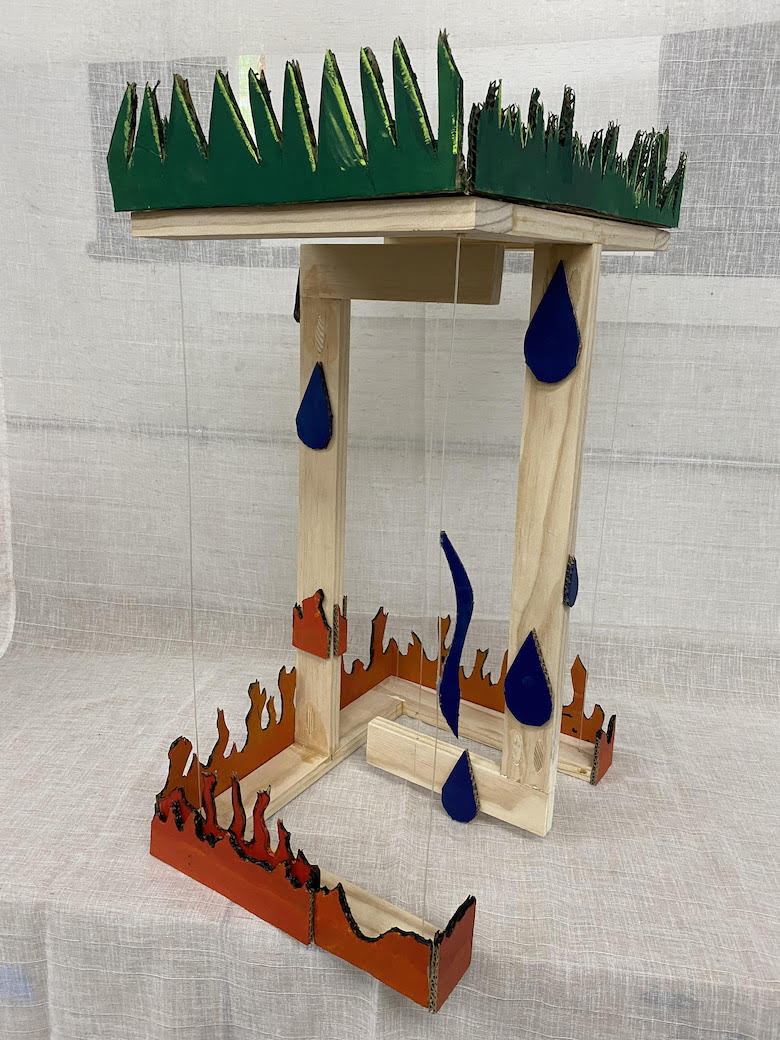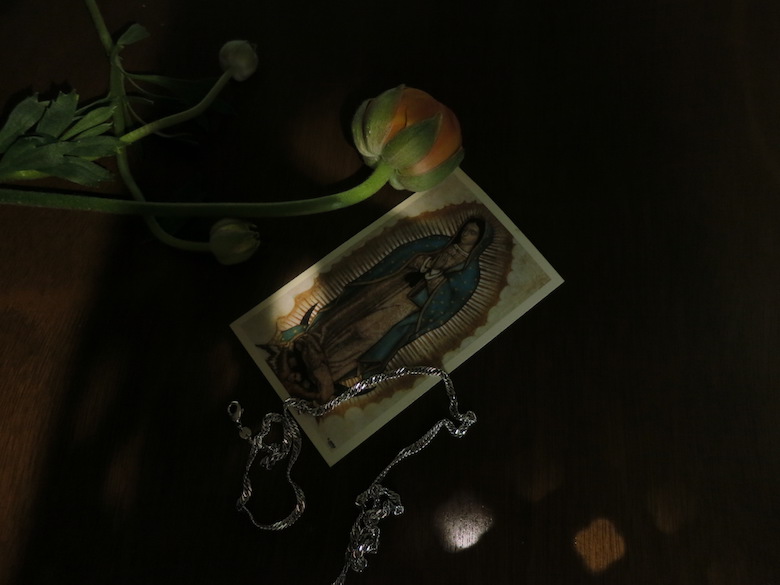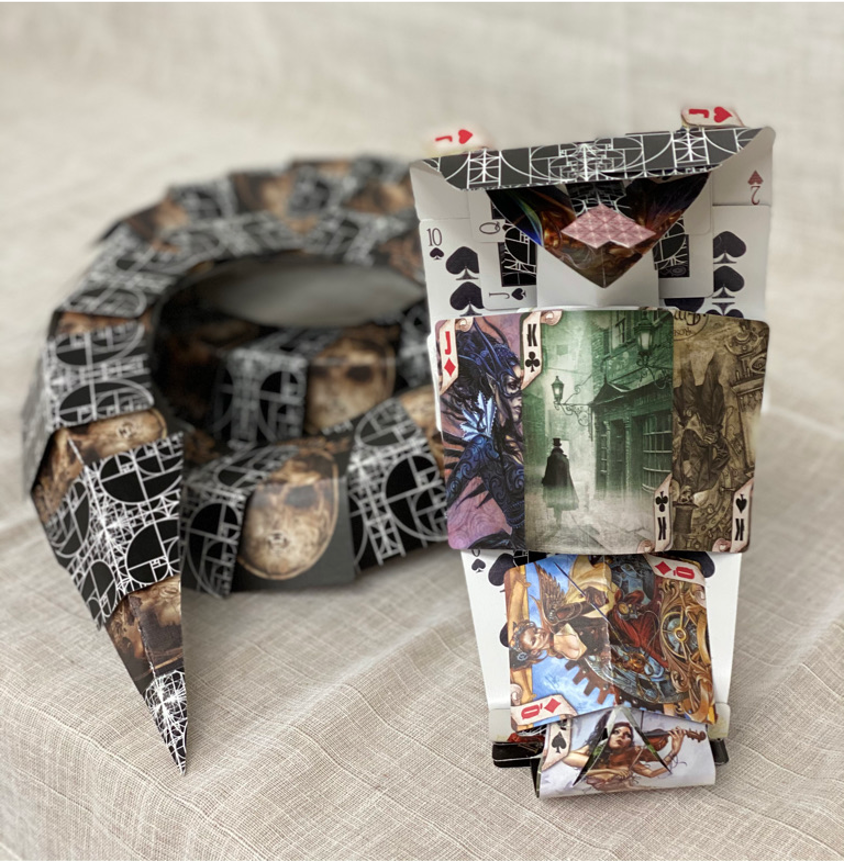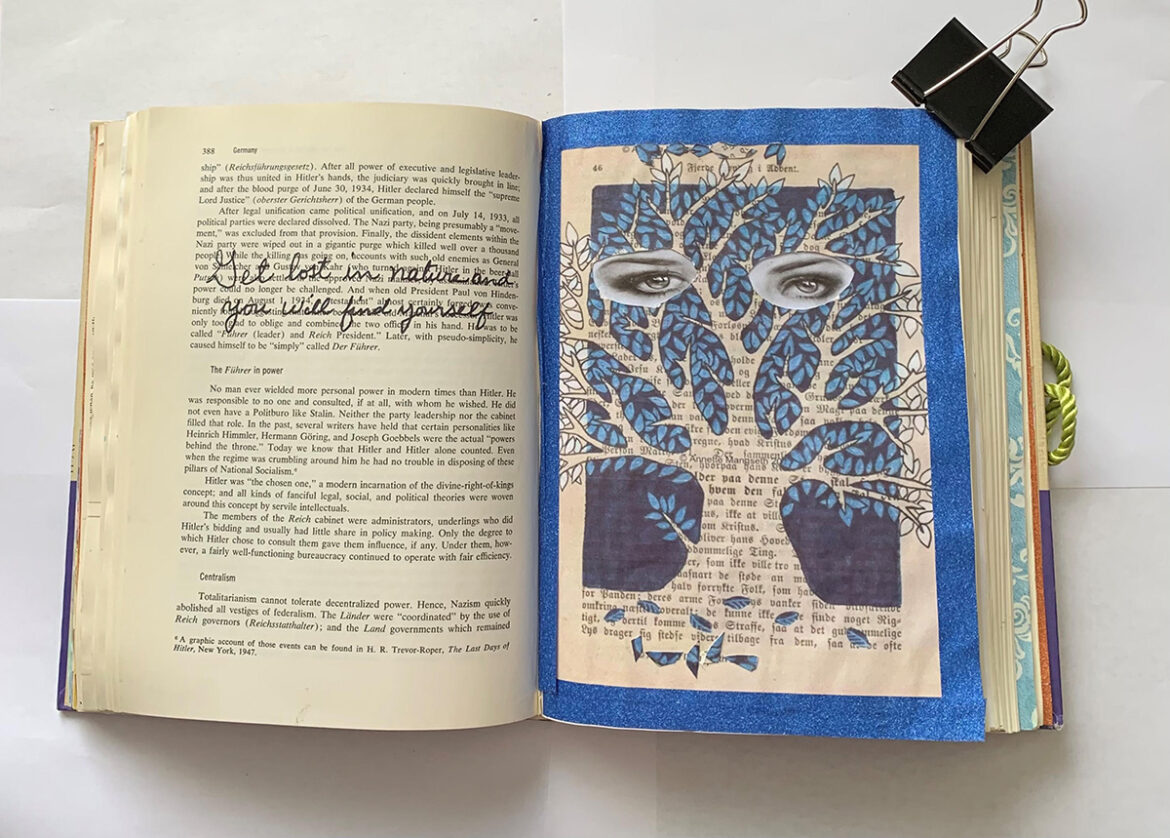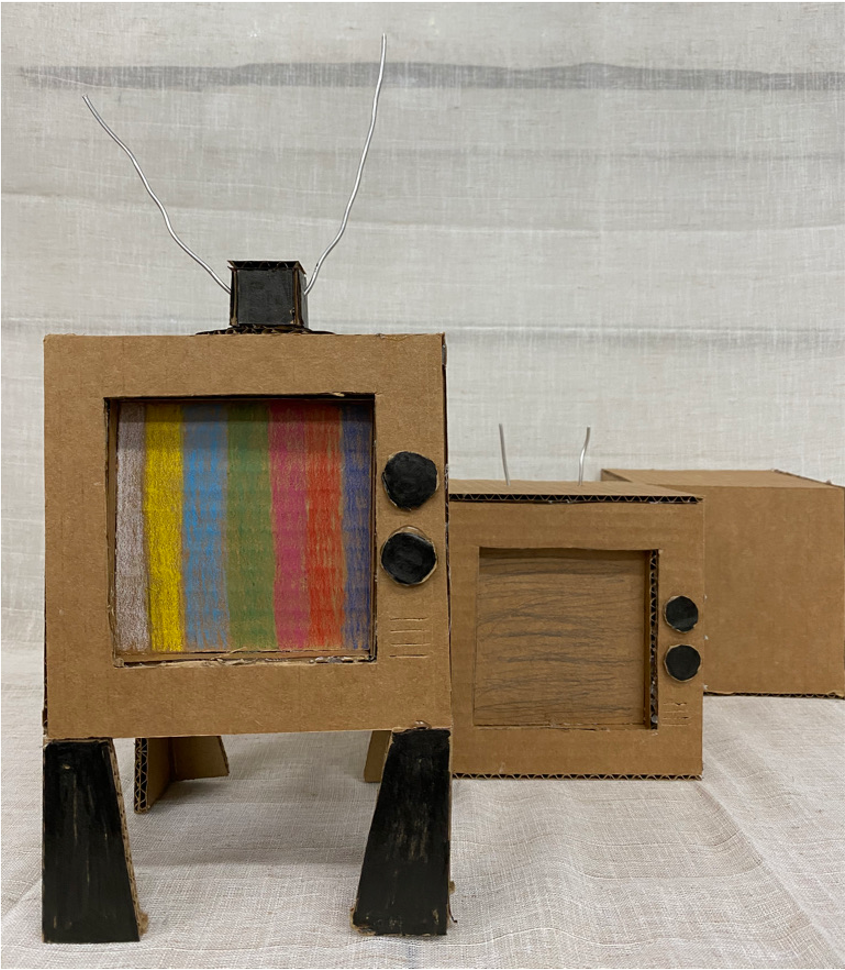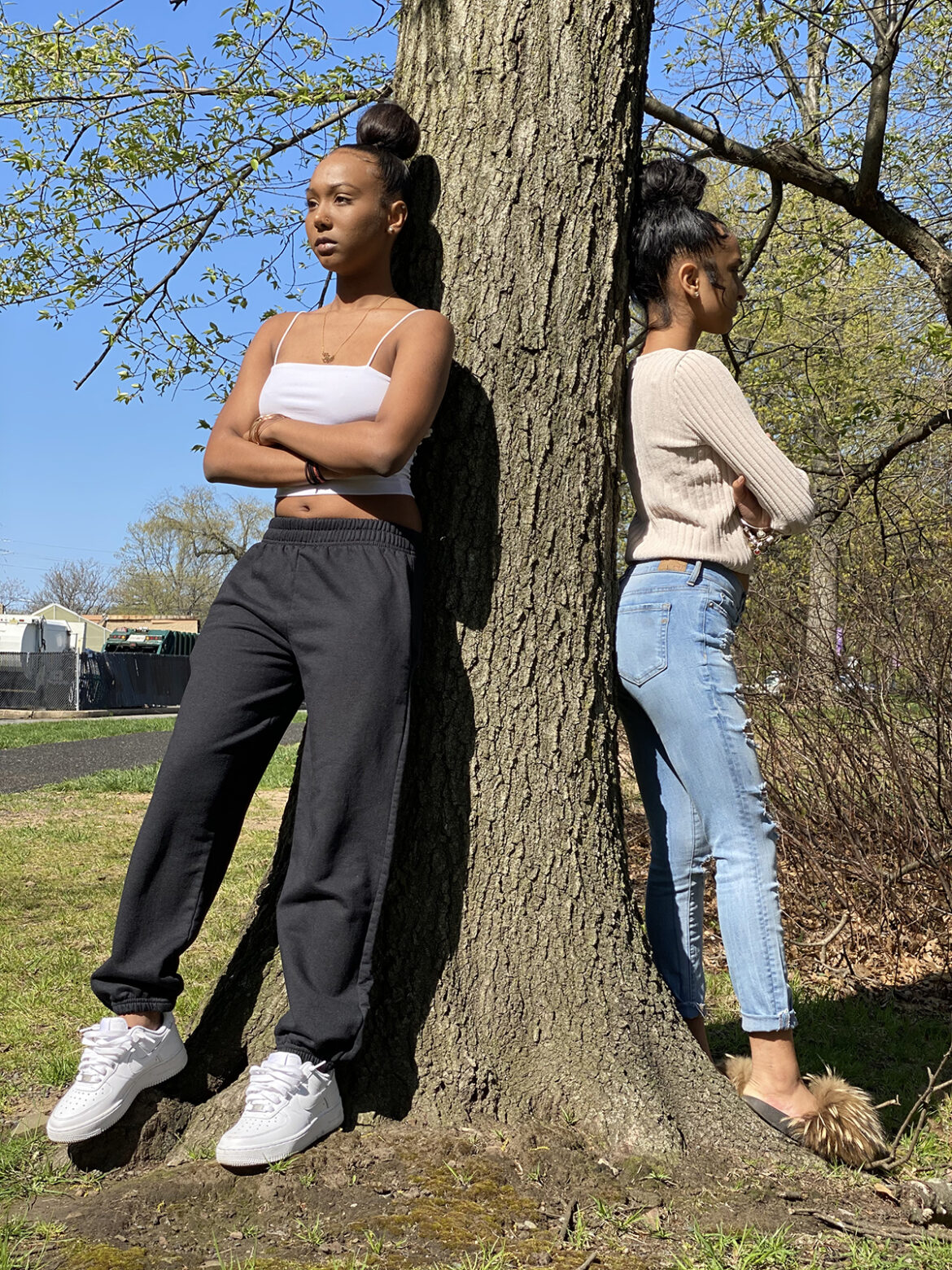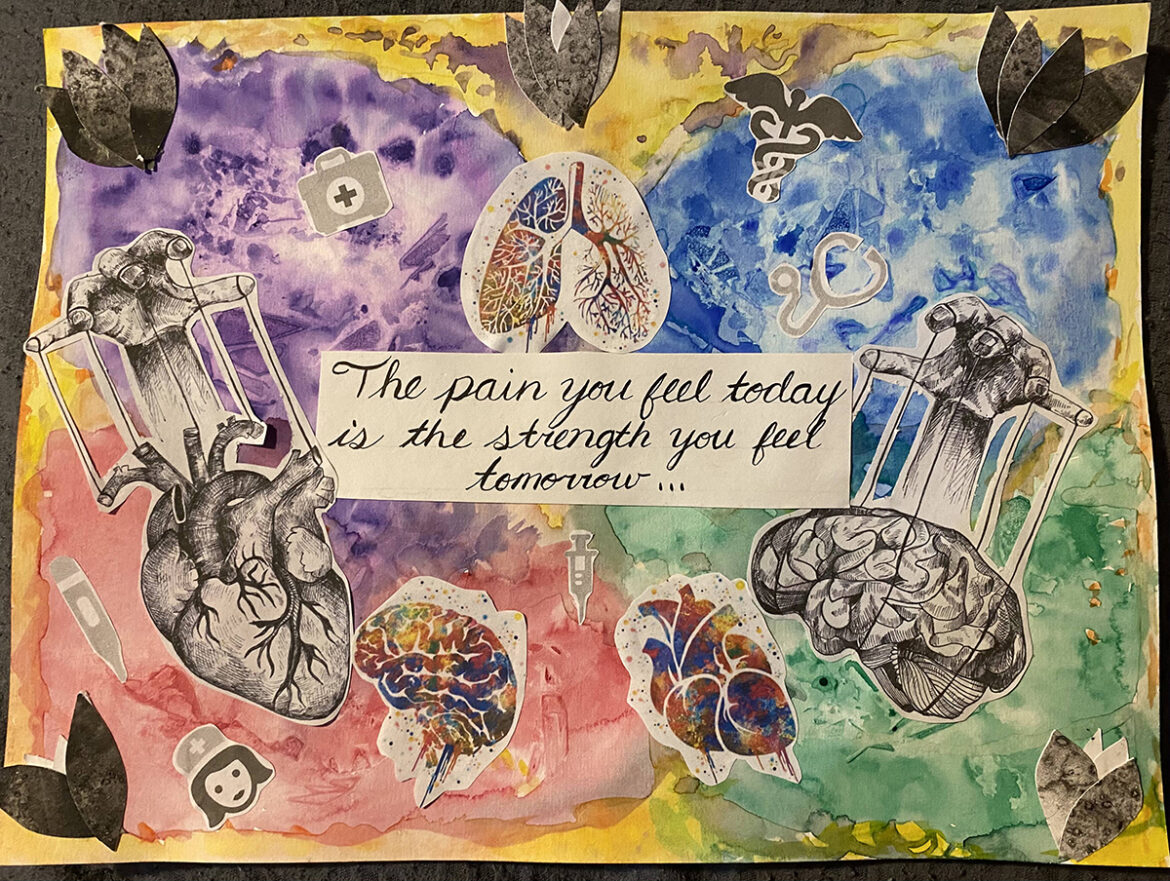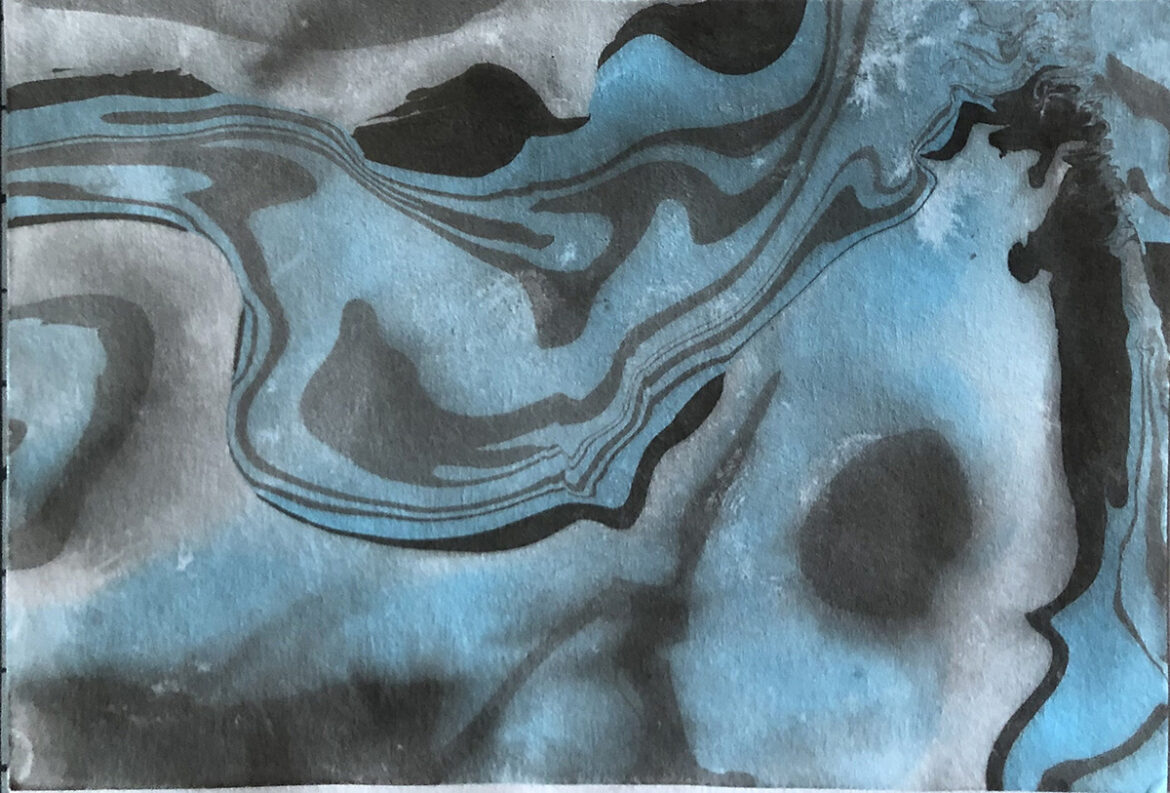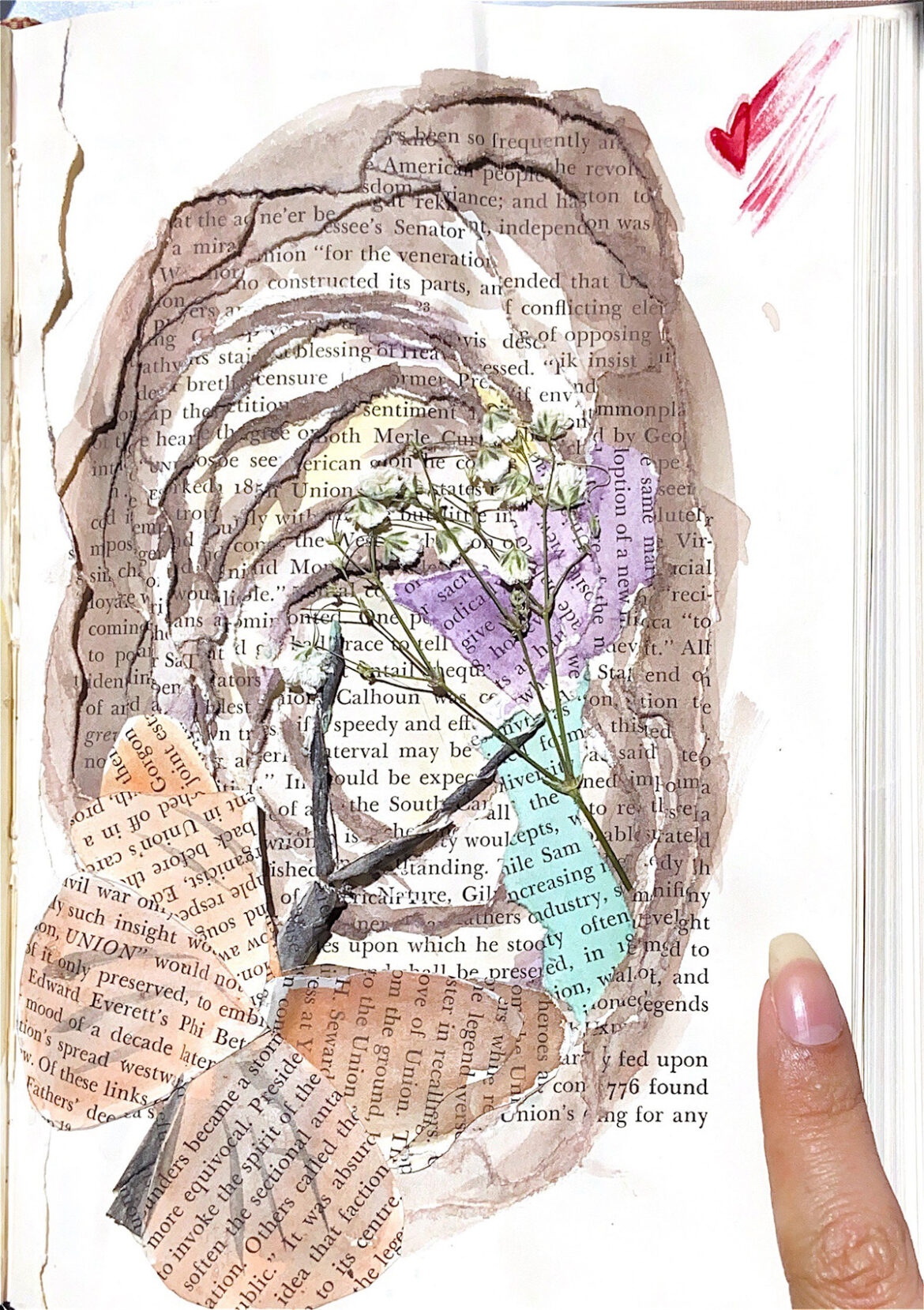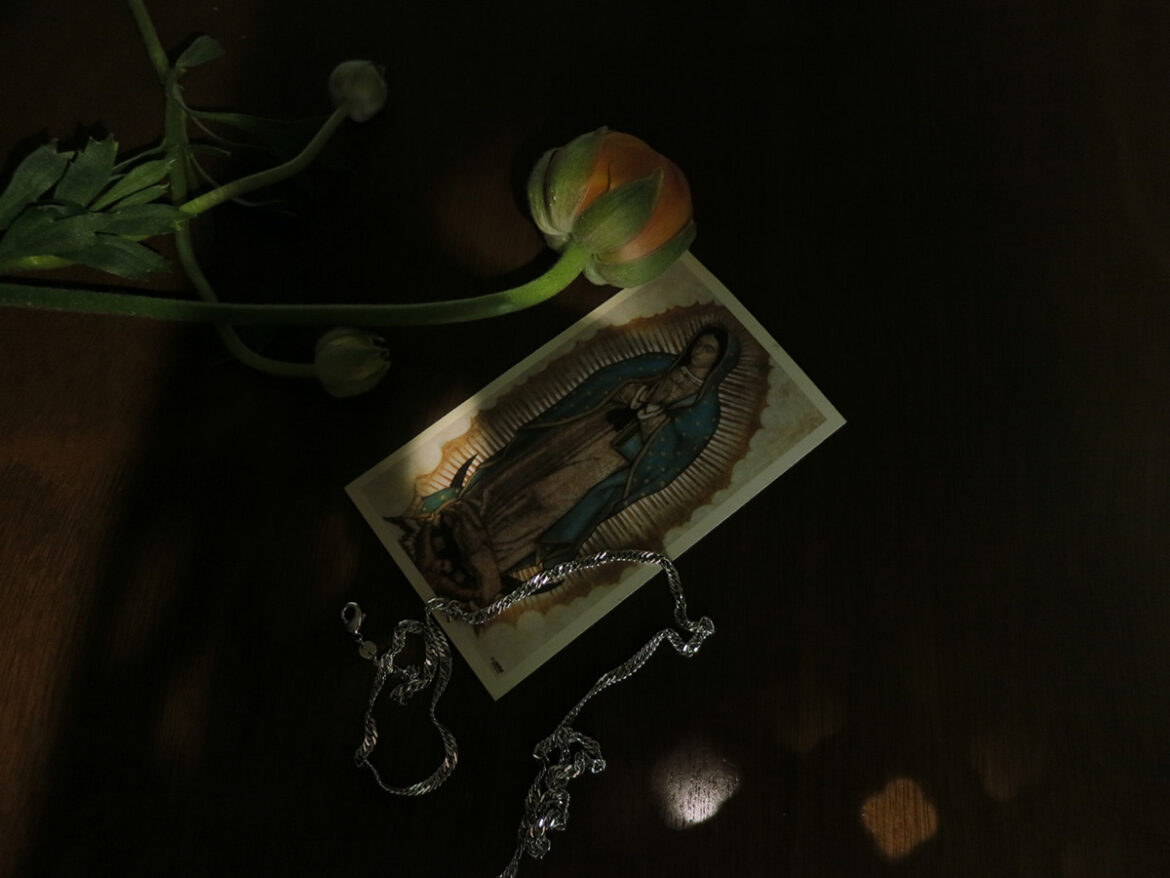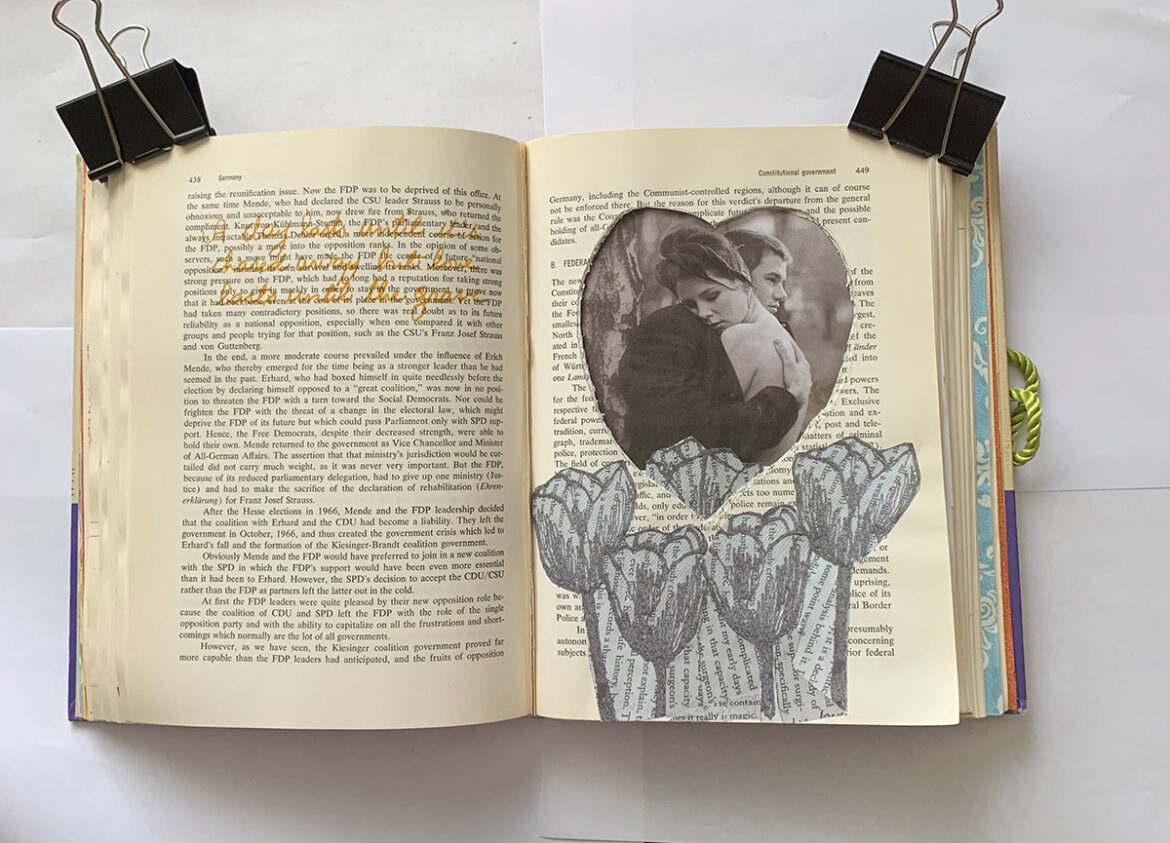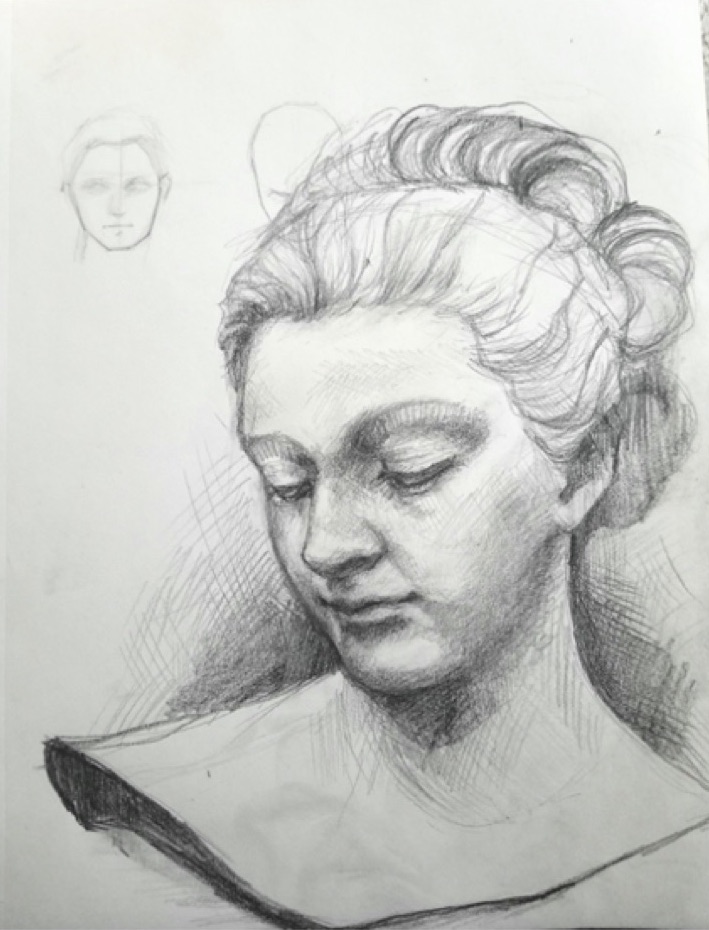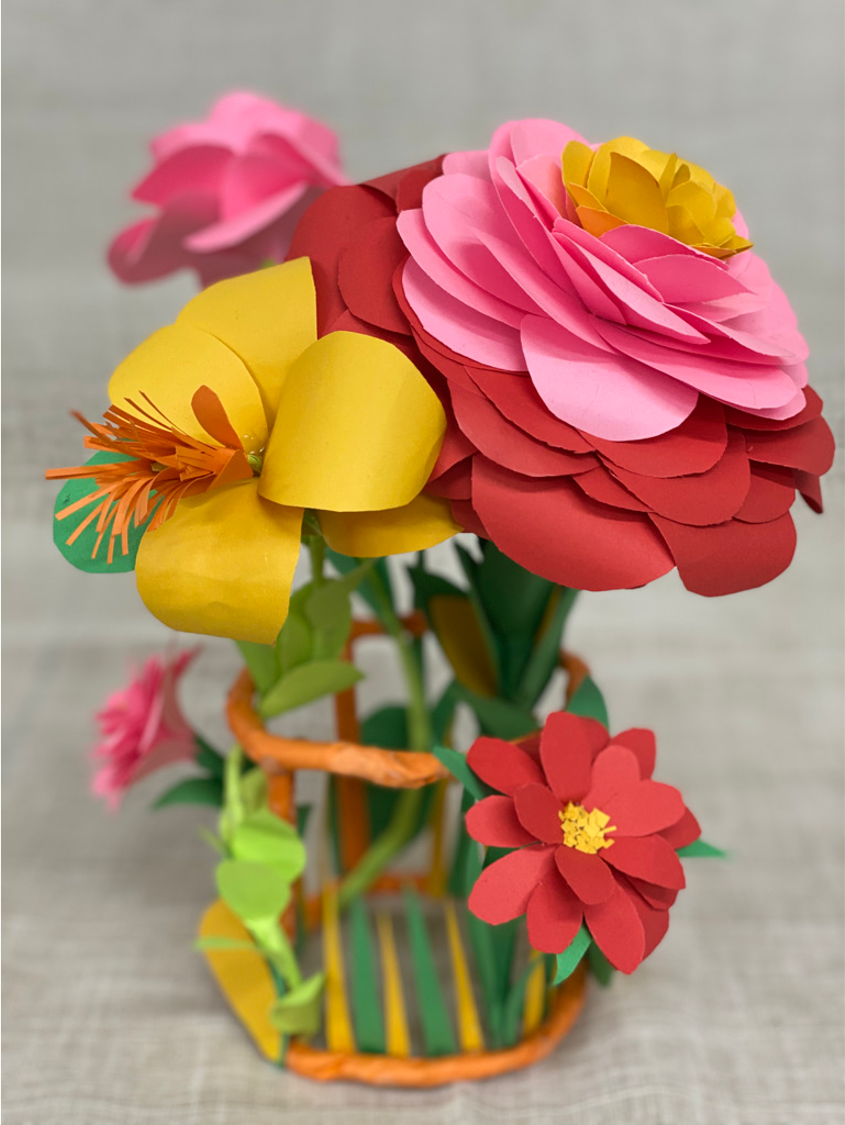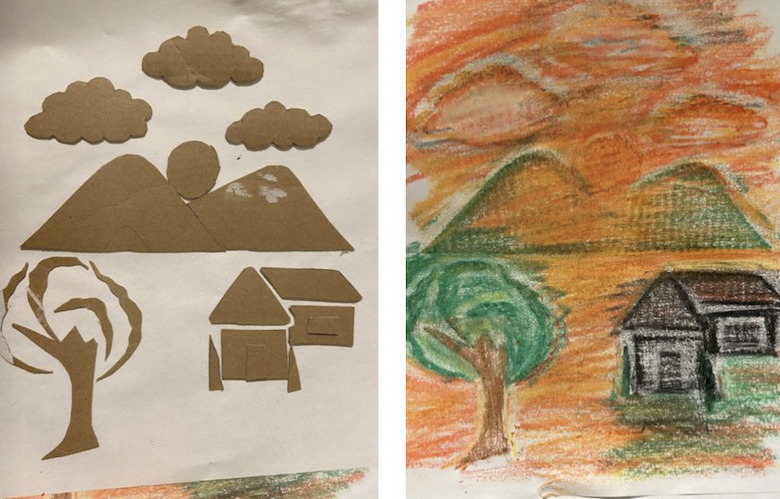SJC Brooklyn’s new virtual art gallery displays the diverse artistic talents of students front and center.
The gallery — a virtual version of the art exhibit usually displayed in Tuohy Hall’s Alumni Room — showcases the skills students learn in their art classes. The pieces use a wide range of mediums including sculpture, drawing, 2-dimensional design, photography and digital design.
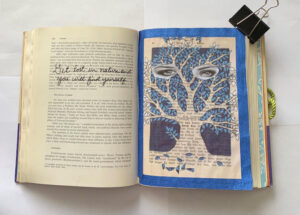
Altered Book by Lynn Luc Milord
“Undeterred by pandemic limitations in the past year, students responded with an outpouring of expression in hands-on courses,” said E. Jane Beckwith, associate professor and associate chair of SJC Brooklyn’s art department. “They set up small studio spaces at home, or work at the College safely in large studios, during an experimental, hybrid sculpture course and a synchronous Zoom studio for Crafts as an Art Form.”
Many students enrolled in art classes at SJC Brooklyn are pursuing creative skills to boost their skill set in their field of choice. For instance, Child Study majors often choose a Fine Arts concentration to incorporate creativity in the classroom, Journalism and New Media majors benefit from classes in photography, and many computer science students enjoy digital design classes.
When students tap into their creativity in SJC art classes, they simultaneously sharpen their concentration, decision making, and focus skills — which can apply to many fields.
“Today, ‘design thinking’ is a factor in every profession,” Beckwith said. “Some art-related professions are obvious, but there are many art and design-adjacent occupations where the abilities developed in formal study can be found.
“Even if you are not seeking a career, art study has been shown to develop capacities that make you a valued employee,” she continued. “Employers want staff who can problem-solve, collaborate and communicate, think clearly, complete tasks independently and show creativity. Art courses help with these skills.”
Virtual Art Gallery Created Through Hands-On Learning
The virtual art gallery features pieces students created in their SJC Brooklyn art classes.
Beckwith encouraged students in her art history classes to think creatively. Her students created digital “FlipSnack” books presenting their final art history research projects, based on trips to the Metropolitan Museum and the Museum of Modern Art, with pages that turn, simulating a real book (See examples here, here and here).
Students incorporated their personal flair into their “FlipSnack” book presentations — some of which are part of the virtual art gallery.
As for Carol Heft, an adjunct professor of art, her drawing students worked from observation and imagination using a variety of mark making and drawing materials. Subjects in the pieces ranged from self-portraits, to figure drawing, landscape and still life. The work presented in the art gallery reflects their insight about individual stylistic development and expressive language.
Studio art minors require a class in 2-dimensional design, which covers the basic design elements, with hands-on projects in a variety of media. It’s the point at which students learn how to be “design thinkers” finding value in rough sketches that grow into polished, finished designs.
Amy Gartrell, an adjunct professor of art, delves into other mediums in her classes, including Digital Photography and Crafts as an Art Form. Her digital photography students — also featured in the gallery — studied the fundamentals of photography through rigorous technical exercises and learned about the creation of meaning in contemporary art photography.
Gartrell’s class on crafts as an art form took on a special project called Altered Books, one-of-a-kind artwork that is created out of damaged or discarded books, altering both the book’s appearance and meaning. The original book can become a part of the new work or can be completely obliterated; it is up to the creator. Gartrell’s students created their own Altered Books by working with mixed media, using such materials and techniques as watercolor, collage and modern calligraphy.
In other areas — including Angela Wyman‘s Digital Design courses — art can take a modern spin. Digital Design challenges students to create art that appears online, such as animation, movement, interactivity, 3D modeling and marketing assets.
“With the knowledge of design tools and apps students can explore exciting careers as a graphic designer, game designer, user interface designer, visual designer, interactive designer, art director, production artist, motion designer, web designer or visual information specialist,” shared Wyman. “This can also be a route to self expression and promotion of their own creative enterprises online. Designers are creative problem solvers who use inspiration to answer challenges and work to improve the world around them.”
Students also have an opportunity to take sculpture classes with SJC art veteran Christopher Quiñones ’18.
“Students made sculptures that hang, twist, flow, stand, pop, fold, etc and gained an awareness of the space and the objects around them,” Quiñones said. “They became sensitive to the rhythm of color, the balance of weight, size, scale, and the many characteristics of the objects around us, both art and not.”
Check out the SJC Brooklyn student art gallery here:
